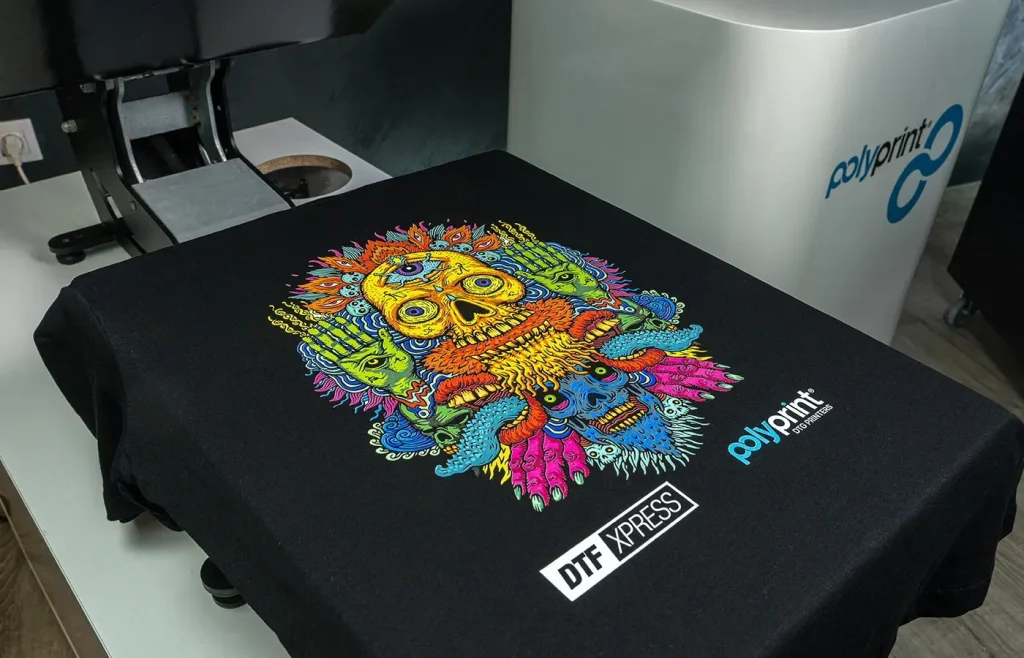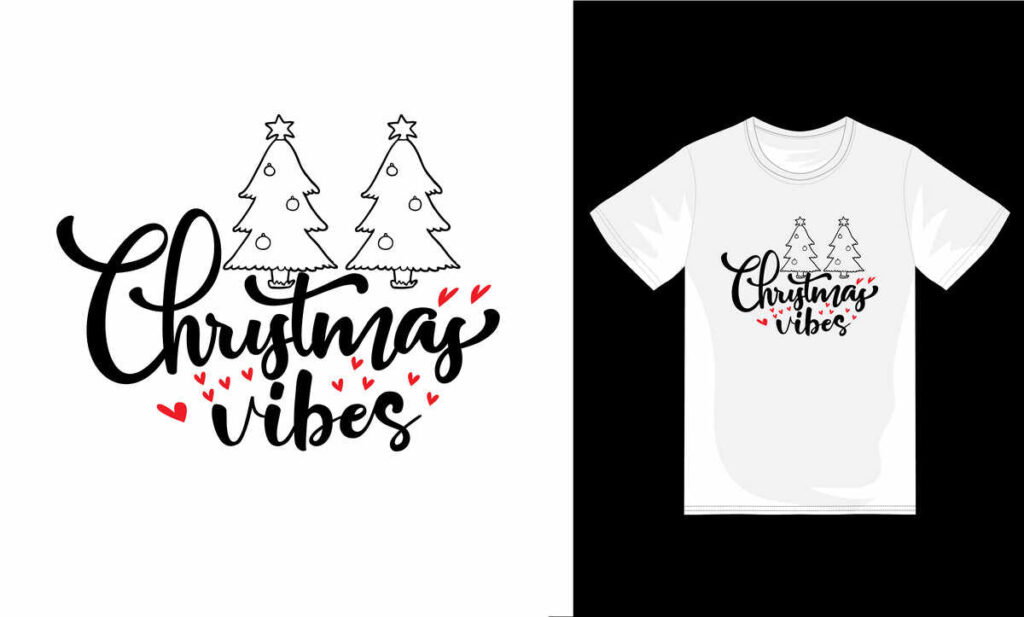DTF printing, or Direct to Film printing, has become a game-changer in the realm of custom apparel and fabric design, revolutionizing how designs are transferred to garments. This innovative technique allows for vibrant prints that are both durable and versatile, appealing to an array of fabric types and styles. Beginners interested in custom apparel printing will find the DTF transfer process particularly exciting, as it combines ease of use with high-quality results. With the right DTF printer and materials, creators can express their unique style and create eye-catching designs that stand out. In this guide, we will navigate through the fundamentals of DTF printing, the benefits it offers, and essential tips for getting started in this dynamic field.
Direct to Film printing, also known as DTF printing, represents a new wave of customization in fabric printing. This approach is characterized by its ability to produce detailed and colorful designs on various textiles, making it a popular choice for those creating custom apparel. The DTF process not only streamlines production but also ensures that prints are long-lasting and resist fading, appealing to fashion enthusiasts and small business owners alike. As we delve into the intricacies of this printing technique, we’ll explore how it stands out against traditional methods and why it has garnered attention in the creative community. Prepare to discover the endless possibilities that arise from utilizing DTF technology for your fabric designs.
Understanding the DTF Transfer Process
The DTF transfer process is a crucial element in the world of custom apparel printing. It involves a series of steps that begin when a digital image is encoded using graphic design software, allowing for personalization and creativity. Once the design is finalized, it’s printed onto a special transfer film using a DTF printer, a machine that specifically utilizes high-quality, vibrant inks. This initial stage is important because it sets the tone for the quality of the final product, making it essential for beginners to learn how to operate these printers effectively.
After the design is printed on the film, a powdered adhesive is applied while the ink is still wet. This adhesive is fundamental for ensuring that the design can be properly transferred to various fabrics. Post-adhesive application, the film undergoes a curing process using heat to bond the ink and adhesive securely. Finally, the film is positioned on the fabric and subjected to heat and pressure, resulting in a vibrant and durable print. Understanding this process allows beginners to appreciate the intricacies of DTF printing and enhances their ability to create stunning custom designs.
Advantages of DTF Printing for Custom Apparel
DTF printing is lauded for its multitude of advantages over traditional printing methods when it comes to custom apparel. One of the most significant benefits is its versatility; DTF can be applied to a wide variety of fabrics including cotton, polyester, and even blends, making it an excellent choice for designers working with diverse textiles. This flexibility allows businesses to cater to various consumer needs, enhancing customer satisfaction and opening doors for creative expression.
Another key advantage is the durability of prints produced through the DTF method. Unlike other printing techniques that may fade, crack, or peel after repeated washes, DTF prints maintain their integrity and vibrancy, ensuring long-lasting results. This feature is particularly appealing to apparel manufacturers who prioritize quality and longevity in their products. Optimization for small production runs further enhances its appeal, allowing businesses to produce unique items without incurring prohibitive costs.
Choosing the Right DTF Printer
Selecting the most suitable DTF printer is essential for achieving high-quality results in custom apparel printing. The market offers a range of options, from entry-level models to high-end machines designed for commercial use. Beginners should consider factors such as print resolution, speed, and compatibility with various transfer films to match their specific needs. Researching models that are well-reviewed in the industry can provide valuable insights into what might best suit their requirements.
An optimal DTF printer should also work seamlessly with the chosen inks and materials, as the compatibility affects the quality and durability of the final product. Additionally, investing in a printer that allows for color management can significantly enhance the finished prints, ensuring that colors appear true to the original design. This foundational knowledge of printer selection equips beginners with the right tools to embark on a successful DTF printing journey.
Learning Curve: Mastering DTF Technology
The learning curve associated with DTF printing can be steep for some beginners, as they must familiarize themselves with both the technical operation of printers and the creative aspects of design software. Many may encounter challenges during their initial attempts, from adjusting print settings to mastering design layout for optimal transfer. However, embracing this learning phase is essential for success in the custom printing industry as it will enable users to refine their techniques and improve their output.
Utilizing online resources, such as tutorials and community forums, can greatly aid in overcoming this initial hurdle. Engaging with experienced printers or participating in workshops can also offer hands-on learning opportunities that help demystify the process. By dedicating time to practice and absorbing knowledge, beginners can efficiently navigate the learning curve, ultimately leading to impressive results in their DTF printing endeavors.
Innovations in DTF Printing Technology
As DTF printing technology continues to evolve, several innovative advancements are shaping the future of custom apparel printing. Among these developments are improved printer capabilities that enhance print speed, resolution, and ease of use. Newer DTF printers feature streamlined designs and advanced software integration, which facilitate smoother workflows and more efficient production processes for both hobbyists and professional businesses.
Additionally, innovation extends to the materials used in DTF printing, including transfer films and inks, which have seen considerable upgrades. Manufacturers are focusing on producing transfer films that are not only easier to apply but also result in stronger bonds with the fabric. Enhanced ink formulations now offer better color fidelity and wash resistance, allowing users to produce high-quality garments that remain bright and intact after numerous washes. Such improvements enable businesses to offer superior products in today’s competitive market.
Getting Started: Essential Resources for DTF Printing
Beginning your journey into DTF printing can be overwhelming, but numerous resources are available to help ease the transition. Online platforms, including YouTube, host a multitude of video tutorials that cover everything from the basics of operating a DTF printer to advanced design techniques. These visual aids are invaluable for beginners who prefer a hands-on learning approach as they can observe the process in real-time and follow along.
Furthermore, engaging with industry blogs and online communities can provide ongoing support and inspiration. Many bloggers and seasoned printers share tips, advice, and updates on the latest trends in DTF technology, creating a rich resource network for newcomers. By leveraging these resources, beginners can gain insights, troubleshoot issues, and continue to develop their skills in the exciting realm of DTF printing.
Frequently Asked Questions
What is DTF printing and how does it differ from traditional printing methods?
DTF printing, or Direct to Film printing, is a modern technique where designs are printed onto a specialized film and then transferred onto fabric. Unlike traditional methods that print directly on garments, DTF printing offers greater versatility, allowing for application on various fabric types with vibrant colors and intricate details.
What are the key benefits of using DTF printing for custom apparel?
The benefits of DTF printing include its versatility in transferring designs on multiple fabric types, durability against fading and cracking, cost-effectiveness for small runs, and the ability to produce high-quality prints with vibrant colors. This makes it a preferred choice for custom apparel printing.
How does the DTF transfer process work?
The DTF transfer process involves several steps: first, a digital design is created; then, it is printed onto a transfer film using a DTF printer; next, a powdered adhesive is applied to the wet ink; the film is heat-cured; and finally, the design is transferred to fabric using heat and pressure, resulting in a durable print.
What equipment is needed to get started with DTF printing?
To start with DTF printing, you will need a DTF printer, specialized transfer films, pigment inks, and a heat transfer machine. Additionally, graphic design software is essential for creating digital designs, ensuring that you can produce high-quality custom apparel.
Are there any initial costs or considerations involved in DTF printing?
Yes, initial costs for DTF printing can be higher due to the expense of DTF printers, specialized films, and inks. It’s important to ensure material compatibility and be aware of a potential learning curve as you familiarize yourself with operating the DTF printer and achieving optimal results.
What resources can I use to learn more about DTF printing techniques and advancements?
To learn more about DTF printing, consider exploring online tutorials, industry blogs focused on printing technology, and joining forums or communities. These resources provide valuable insights, tips, and guidance from experienced practitioners in the custom apparel printing field.
| Key Points | Details |
|---|---|
| What is DTF Printing? | DTF printing (Direct to Film) is a method for transferring designs onto garments. It involves printing on a special film that is later applied to various textiles using heat and pressure. |
| How Does DTF Printing Work? | 1. Create a digital design. 2. Print the design on transfer film. 3. Apply powder adhesive to the wet ink. 4. Heat-cure the film. 5. Transfer the design to fabric using heat and pressure. |
| Benefits of DTF Printing | – Versatility in printing on various materials. – Durable prints that resist fading and peeling. – Cost-effective for small runs. – Vibrant color quality and intricate details. |
| Considerations Before Starting | – Initial investment in equipment can be high. – Ensure material compatibility for optimal results. – Expect a learning curve with the printing technology. |
| Current Developments in DTF Technology | – Enhanced printer capabilities and speed. – Innovative transfer films with better durability. – Improved ink formulations with better wash resistance. |
| Resources for Learning | – Online tutorials on platforms like YouTube. – Blogs focused on printing technology and design. – Forums and communities for connecting with experienced users. |
Summary
DTF printing stands out as a transformative technique in the realm of custom apparel, offering an efficient and cost-effective way to create vibrant, high-quality designs. This innovative method not only allows for a diverse range of applications across different fabric types but also ensures durability and resilience against wear. As you dive into the world of DTF printing, you will discover numerous opportunities to unleash your creativity and fine-tune your skills. With the guidance and resources available, from online tutorials to community forums, you can master the nuances of DTF printing and craft unique custom pieces that resonate with your personal style or business vision. Embrace this exciting printing technology, and watch your creative ideas come alive.



